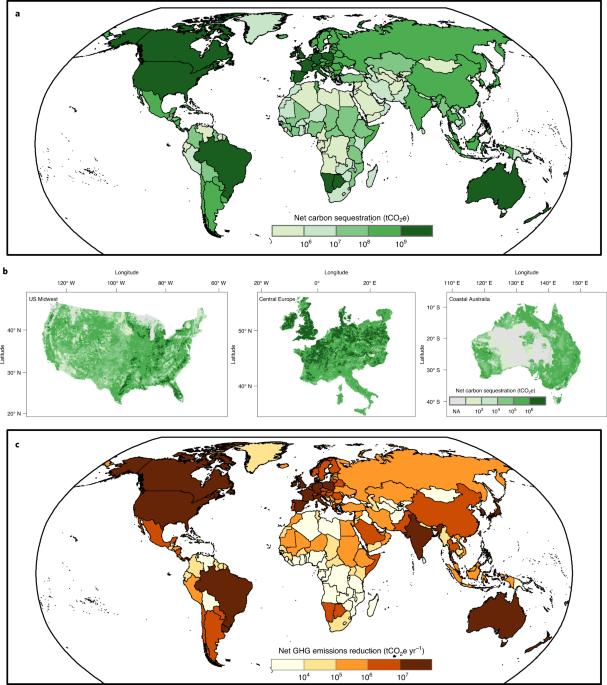Dietary change in high-income nations alone can lead to substantial double climate dividend
IF 23.6
Q1 FOOD SCIENCE & TECHNOLOGY
引用次数: 55
Abstract
A dietary shift from animal-based foods to plant-based foods in high-income nations could reduce greenhouse gas emissions from direct agricultural production and increase carbon sequestration if resulting spared land was restored to its antecedent natural vegetation. We estimate this double effect by simulating the adoption of the EAT–Lancet planetary health diet by 54 high-income nations representing 68% of global gross domestic product and 17% of population. Our results show that such dietary change could reduce annual agricultural production emissions of high-income nations’ diets by 61% while sequestering as much as 98.3 (55.6–143.7) GtCO2 equivalent, equal to approximately 14 years of current global agricultural emissions until natural vegetation matures. This amount could potentially fulfil high-income nations’ future sum of carbon dioxide removal (CDR) obligations under the principle of equal per capita CDR responsibilities. Linking land, food, climate and public health policy will be vital to harnessing the opportunities of a double climate dividend. The exact contribution of alternative diets to climate change mitigation depends on several factors, including where these diets are adopted. This study quantifies avoided greenhouse gas emissions that would result from a shift to EAT–Lancet diets in 54 high-income countries through agricultural production and the restoration of natural vegetation in saved lands.

仅高收入国家的膳食变化就能带来可观的双重气候红利
如果高收入国家的膳食从动物性食物转向植物性食物,可以减少直接农业生产所产生的温室气体排放,同时如果因此而幸免于难的土地恢复到以前的自然植被,还可以增加碳固存。我们模拟了占全球国内生产总值 68% 和人口 17% 的 54 个高收入国家采用 EAT-Lancet 行星健康饮食的情况,以此估算这种双重效应。我们的结果表明,这种饮食习惯的改变可将高收入国家饮食中的农业生产年排放量减少 61%,同时封存多达 98.3(55.6-143.7)GtCO2 当量,相当于目前全球农业排放量的大约 14 年,直到天然植被成熟为止。根据人均等量二氧化碳清除(CDR)责任原则,这一数量有可能满足高收入国家未来的二氧化碳清除(CDR)总和义务。将土地、粮食、气候和公共卫生政策联系起来,对于利用双重气候红利的机会至关重要。替代膳食对减缓气候变化的确切贡献取决于多个因素,包括这些膳食的采用地。本研究量化了 54 个高收入国家通过农业生产和在节约的土地上恢复自然植被而转向 EAT-Lancet 饮食所避免的温室气体排放。
本文章由计算机程序翻译,如有差异,请以英文原文为准。
求助全文
约1分钟内获得全文
求助全文

 求助内容:
求助内容: 应助结果提醒方式:
应助结果提醒方式:


